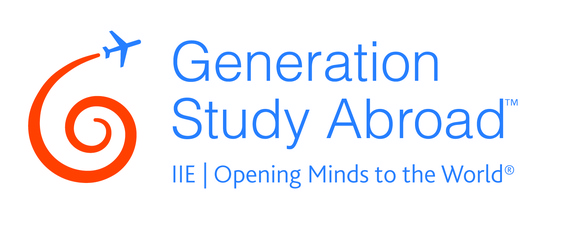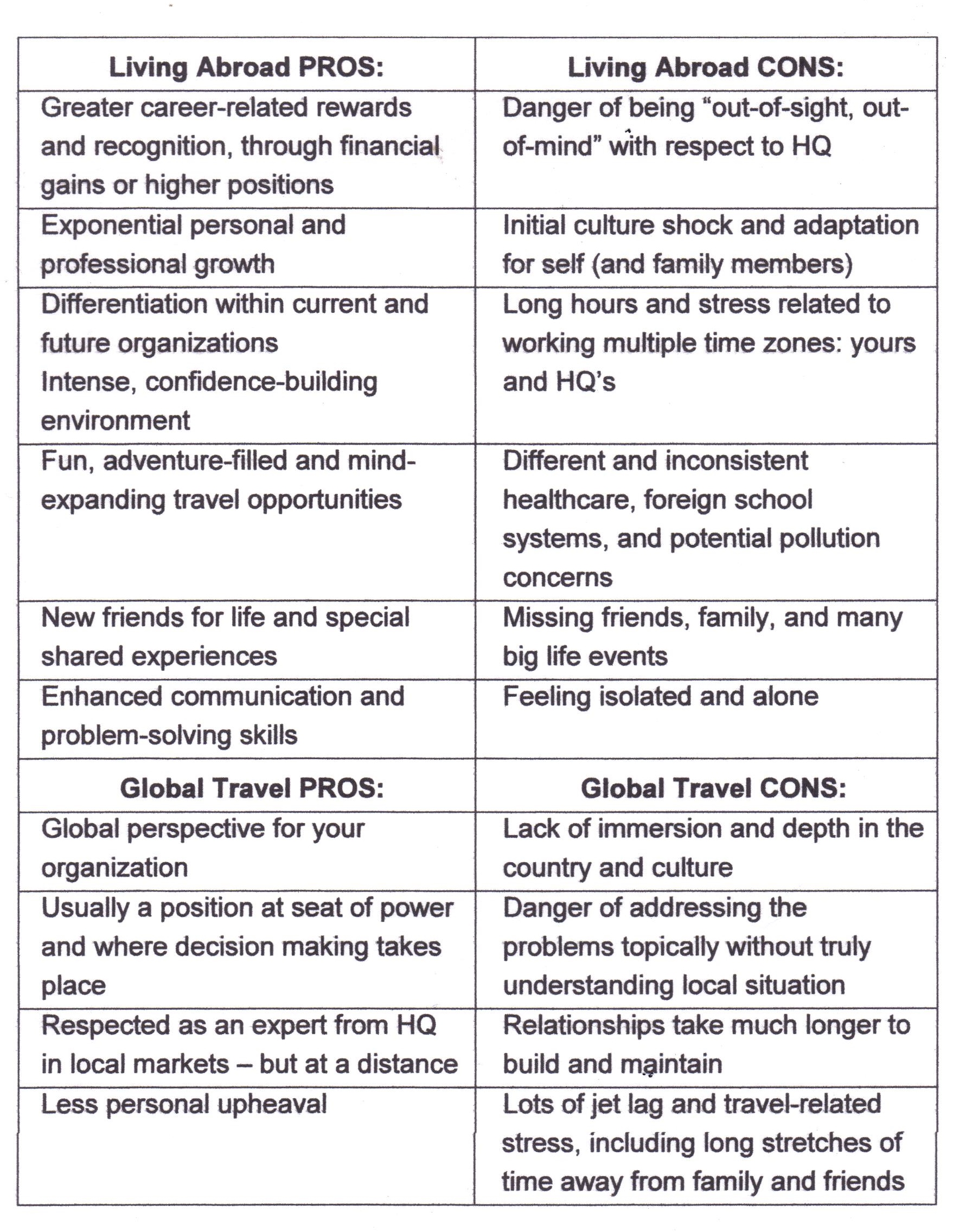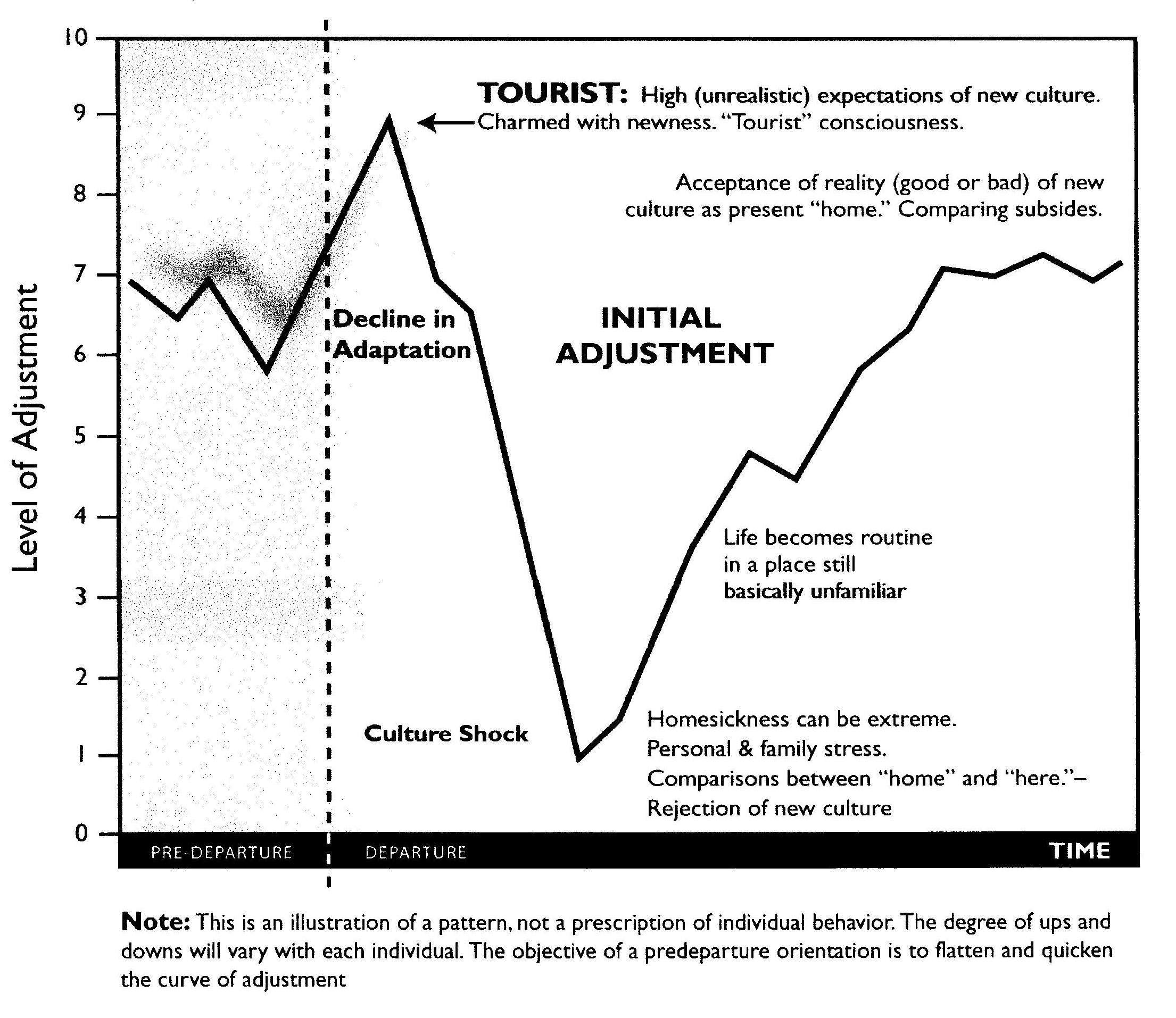Living Abroad vs. the Constant Traveler
Posted on Sep 15, 2014
To live the life of an expatriate or that of the road warrior – that is the question.
Naturally, there are pros and cons to both. Traveling a great deal takes its toll on your body and your family (if applicable) but doesn’t involve the upheaval of a physical move. You won’t have to worry about selling, buying, or renting a house or apartment. You won’t have to go through the angst of what to pack, what to store – and, yes, what to throw out. You won’t have to worry about whether your household goods will arrive at their destination, or about setting up house in a foreign land that doesn’t have your accustomed appliances or groceries. You won’t have to miss your friends, and if you can macromanage your international travel schedule, you probably won’t have to miss weddings, funerals, and other big events. However, you also won’t experience as revolutionary a change. As a professional you will likely be judged as ethnocentric whether or not you are. If you have a “global role,” you will not be expected to understand too much of what is going on in any particular country, as you are expected to bring big-picture solutions, not market-specific plans that solve local problems. You will be perceived as an expert from HQ, someone to be respected and listened to, though perhaps not always welcomed or trusted because “you don’t live here and you don’t get it.”
For many professionals, having an international career while working at home base is the optimal choice. For some, their careers simply took off this way and although they may have been afforded the opportunity to move overseas, they declined for personal reasons. Some did not want to give up a seat so close to decision-making power, viewing their proximity as a better position for their advancement. This can certainly be true. Many times, however, the only way a new manager can acquire international skills is to take the risk and move abroad.
Following is a snapshot of the major differences between the two. You decide what’s best for you.
Overall, the vast majority of women and human resource executives we interviewed agree that although you can usually do your job effectively while traveling in and out of countries, you miss the deep dive if you don’t go overseas – at least for a portion of your career. The new globetrotters tend to work and live abroad for at least three years and, if possible, return to an international or global position as their next move.
For more information, check out Get Ahead By Going Abroad.
Understanding and Dealing with Culture Shock
Posted on Sep 4, 2014

As college students who are studying abroad take the time to pack and plan for their time abroad, I’d recommend they also think about — and be prepared for — culture shock.
Culture shock is one of the most widely discussed and often misunderstood aspects of any international experience. Technically speaking, culture shock is the confusion, disorientation and emotional upheaval that comes from immersion in a new culture. For example, you may be tired of using frustrating and confusing public transportation that doesn’t seem to work well. Maybe you’re exhausted from making yourself understood all the time and just want to speak with someone like you. Even just standing out, looking foreign, bothers many people abroad. These minor problems balloon into massive problems. You feel like an outsider and may even be depressed. You are experiencing culture shock.
Culture shock typically follows a three-phased cycle starting with a honeymoon period when everything feels grand. But fabulous turns to frustration, depression and confusion, often triggered by an event involving seemingly minor cultural differences. All usually ends well, however, as the recovery phase restores equilibrium after you’ve regained confidence and learned to appreciate the culture as a whole. A little bit wiser, you’re able to move on. International newbies are often either overly optimistic (“I won’t have any trouble adjusting”) or overly pessimistic (“Everyone takes six months to get used to the basics before they can do anything productive”).
Source: TMC | A Berlitz Company. All rights reserved 2013
You may have heard some people say that they don’t experience culture shock. Well, odds are, they did, but perhaps didn’t recognize it as such, or they’re too embarrassed to share their stories. Worse still, they might not have immersed themselves in the local culture, and so were never exposed to it to the point where they had to confront their discomfort in the first place. That would be sad, and we certainly don’t recommend that you take that approach. Culture shock is a learning experience and leads to broader perspectives, more tolerance, and greater appreciation for your new culture and your home culture. It’s important that you prepare for culture shock, and learn how to deal with it. Doing so is one of the best ways to experience the deep personal growth of life abroad, as so many others have. Here are some tips on dealing specifically with culture shock:
- Assume differences until similarity is proven.
- Relate to individuals, not a “culture.”
- Work with a culture rather than against it.
- Ask “what do I need to understand?” not “what should I do?”
- Listen and observe, think and then talk.
- Focus on the benefits of differences rather than simply trying to avoid mistakes.
In fact, almost everyone who spends a significant time abroad experiences some degree of culture shock with every major cultural transition—whether moving to a new culture, or dealing with a new cultural group or sub-culture at home. You can experience a type of culture shock if you are working on a project on your home campus with a group of diverse people from different backgrounds, or returning to the U.S. after time abroad. Whatever your encounters are, you will need to develop coping mechanisms.
Once you’ve spent time in cross-cultural environments, you will learn to recognize your own pattern of adjustment to new experiences. You will put to good use the coping mechanisms that work best for you. By giving yourself the space, time, and other support you need to adjust, you can smooth your transition and develop your own culture shock absorbers. This adaptability is important because you will need to cope and move on—not let these encounters stymie your growth or experiences—so you can continue to study and eventually work productively across cultures.
That said, if you find that your case of culture shock has become a consistent, awful strain that gets worse rather than better, take it as a warning sign, and consider reaching out to your sending program or local adviser for help. Most students find that like subsequent ripples from a stone being thrown in a pond, the height and frequency of culture shock waves should diminish with time. This is why many students wish afterwards that they had stayed abroad longer; they recognize that it does get easier with time. But in the beginning you’ll need to learn to adapt.
But culture shock often happens when returning home as well. Savvy internationalists also remember that the toughest bouts of culture shock often happen when transitioning “home.” This reverse culture shock or re-entry shock also requires coping techniques—and preparation.
For more information on culture shock check out the popular Culture Shock! series.
Friendships Across Cultures
Posted on Aug 26, 2014

With school just around the corner, children may have the opportunity to meet kids who are different than they are. Encouraging them to make friends with students who are different — no matter how big or small the difference — is an excellent way to encourage acceptance of diversity and participate in friendships that bridge cultures. This, in turn, can lead to forming friendships across cultures and nationalities, which is recognized as one of the most important aspects of developing a global mindset.
Cross-cultural learning and sensitivity is all theoretical until children actually begin interacting with people from different backgrounds and with different assumptions about the world. Such interactions aren’t always easy, but they are rich with possibilities for new perspectives, ideas, experiences, and awareness. The most productive of these, naturally, will be those with other children with whom they can relate on the level that comes most naturally and comfortably to them. Having play dates and caregiving swaps with children and families from different cultures often means a chance for your child to try new foods, games, and other fun activities, and hopefully is a way to avoid play dates centered around Xboxes and the classmate with the most American Girl dolls.
There are many opportunities for children to find more diverse friends. Consider for instance:
- School. Both public and private schools are generally more diverse and multicultural today than ever before. That is one of the great advantages of living in regions of cultural diversity. By making a point of inviting over classmates who come from different backgrounds, you will be helping both children learn that different doesn’t mean wrong, just different.
- Libraries and parks. Local libraries and parks often host events celebrating a range of holidays relevant to various immigrant and established cultural populations in the area. These events, along with the stories read and games played there, can be great ice-breakers for building friendships. There may also be groups that meet regularly at a local park or library that focus on a certain language or culture. Ask your local librarian or park ranger for details.
- Faith-based groups. Churches, synagogues, and mosques often host exchange programs with fellow members in different parts of the world. Some faith-based communities organize mission trips for young Americans, trips which can often be positively transformative.
- Cultural festivals. Check out community calendars, local websites, and other sources for information on ethnic festivals, holiday celebrations, and cultural activities. Attending these can be a lot of fun and offer new and interesting games, crafts, foods, and other activities to add to your family’s repertoire. Ideally, you will also meet some families there whose kids hit it off with yours, and can provide them with new ways of viewing the world.
- Sports teams. Depending on where you live, immigrant families may regularly get together to play their national sports. Such groups are generally welcoming to local families who want to join in. In addition to learning how to play a new sport, you are also likely to learn a good deal about the culture from which it comes.
- Immigrant neighborhoods. Immigrant communities typically offer ethnically focused restaurants, groceries, art galleries, craft supply stores, and other venues where it is possible to meet and get to know significantly different American families.
- Refugee groups. Many groups around the United States help resettle refugees who have come to our country from difficult situations in their home countries. Of course, newly arrived refugee families often still dwell emotionally in their home country crises and you will need to exercise reasonable caution in not exposing your children to too much “second-hand trauma.” But children can be very resilient, and often what newly arrived refugee children most want and need is to find welcoming, new friends with no connections to the turmoil they have left behind. As a result, they can quickly become steadfast friends and playmates for U.S.-born children. Time spent with refugee children can also work wonders in helping your child focus on what is important in life, especially family, and all the fun that can be had without a lot of money or material goods. For information on volunteering as a family or otherwise helping make connections with refugee groups in your area, contact your local chapter of Integrated Refugee & Immigrant Services (IRIS).
- Academic visitors. Your local college or university may have a host of graduate students, post-docs, visiting scholars, and other academics who have brought along their families, and whose children are also looking for friends among the local population.
- International exchange groups. A variety of national organizations are increasingly dedicated to helping strengthen people-to-people exchanges between Americans and the rest of the world. You can do a tremendous amount to introduce the outside world into your home via any of the many programs that bring foreign visitors to the United States for periods of time and involve home-stays. Many local World Affairs Councils, for instance, host visiting delegations through the U.S. Department of State’s International Visitors Program, and many such visitors enjoy short home-stays, anything from a meal to a weekend. Hiring an au pair to care for your children is another option, and some places to look include: Au Pair in America, InterExchange, and Cultural Care Au Pair.
- Pen-pal programs. The Internet has transformed traditional pen-pals into electronic pen-pals or “ePals.” And while there will be no more exotic stamps and fascinating stationery arriving from far away, gone, too, is the necessity of waiting weeks for a response. Parents should exercise caution and focus on sites that do not require any personal information from your child, and monitor with whom they email or chat. But having said that, there are still many rewarding sites worth looking at, including Students of the World, ePals Global Community, and A Girl’s World.
- Meet-up groups. The Internet can be a rich source of information on groups organized around any number of topics, including those focused on language or cultural exchange. As mentioned before, just be sure to exercise caution when meeting up with people you don’t know, especially when children are involved. Choose a public place for first meetings.
If you can’t find a group to join in your area that is dedicated to international and cross-cultural exchange, consider starting one!
Of course, friendships must be natural and not forced. But if your lifestyle permits, try stretching yourself and encouraging your child to add more diverse and multicultural friendships to their existing mix. Your children can learn many great life lessons from dealing on their own terms with children from radically different cultures and backgrounds, whether they are kids from faraway places or kids who look and act differently and yet live in the same town.
If you’re interested in learning more about helping your children develop a global mindset, check out Raising Global Children.
Is Study Abroad Right for You – or Someone You Know?
Posted on Aug 19, 2014

As college students head off to campus this autumn— some for the first time as freshmen — they should have study abroad on their minds. Although only 10% of U.S. students actually study abroad over the course of their academic career according to the Institute of International Education’s annual Open Doors Report, I would encourage both students and parents to consider how study abroad can enhance a student’s undergraduate degree.
Ask almost anyone who has studied abroad about their experience, and they will say it was a life-changing opportunity and one of the most rewarding things they have ever done. Ask these same individuals why they went, however, and the answers will be much more diverse. According to the survey I conducted prior to writing A Student Guide to Study Abroad (published by IIE in September 2013), of approximately 350 students who had studied abroad in the past five years, the top three reasons cited for studying abroad were:
- Experience another culture/country: 92%
- Travel: 89%
- Personal growth: 83%
Secondary reasons include:
- Have fun/take a break: 52%
- Career prospects and marketability: 44%
- Learn a language: 30%
- Recommendation from a friend/peer: 23%
- Major or career requirement: 18%
No matter your reasons for studying abroad, you will need to depart ready and open to experiencing the international lifestyle. Some students—and their parents—may have doubts about studying abroad. You may not be sure if you’re ready to spend six months in another country struggling through a second language. You might be concerned about leaving a boyfriend, girlfriend, or groups of friends you’ve recently made. Perhaps you think it will interfere with your coursework for your major, possibly postponing your graduation date. Maybe you’ve never traveled internationally before.
Only you can tell if you have the curiosity, openness and interest to successfully study abroad. Picking up and moving to another country for a semester or a year requires a good deal of research, thoughtful planning, and honest self-assessment. To be sure, no one knows you as well as you know yourself.
Assessing Your Situation and Taking Stock of Your Needs
In addition to determining if studying abroad is a good educational, cultural and emotional fit for you, it’s highly beneficial to determine the kind of study abroad program that is likely to suit you best. Fortunately, there are many more options than there were just 20 years ago when, generally speaking, you either participated in your school’s established study abroad program or you just didn’t go. The flip side of that, of course, is that the abundance of choices available today can seem overwhelming. But if you begin your decision-making process with a prioritized list of criteria, you should be able to narrow the options down to manageable levels. Here’s a list of questions to get you started.
- What do you want to study? It could be your major subject, it could be the native language, or it could be simply to help meet diversification requirements in a creative and intriguing way. And, of course, it could be a combination. You should also consider whether it is important to you to have opportunities to conduct research in your field, or to take part in internship or service learning activities while you are there.
- How important is it that you earn credit for studying abroad? In light of the total financial outlay of studying abroad, the vast majority of students want to receive at least some academic credit for their time and effort. But not all need to receive a full term or semester’s worth. So what is the minimum number of credits you will need to receive to stay on track for graduation?
- Where do you want to study, and why? Is there a specific country or region that interests you, perhaps one that you would want to return to work and live in after graduation? Is there a specific language you want to work on? Is there a part of the world that you are exceptionally curious about and can’t wait to begin exploring? The answers to some of these questions can effectively narrow your search for an appropriate study abroad program. For example, if you want to study classical Greek architecture or Incan history, you’re pretty much going to end up in Greece or Peru. But other goals, like wanting to become fluent in Spanish, can leave you with a wide range of choices. If this is the case, you will need to identify secondary levels of interest such as history, culture, environment, or perhaps long-term business opportunities.
- Where and with whom do you want to live? With a host family? In your own apartment? In a dorm with other students? And if in a dorm, with other American students, with students from all over the world, or with local students? Do you want to go abroad with a group of friends?
- How long do you want to be overseas? Options typically include anything from two weeks to a full academic year. For many, however, especially those who have jobs or who are locked into rigid course sequences, a summer program might prove to be the best alternative. Others study overseas for a full year after receiving their U.S. bachelor’s degree.
- How proficient are you in a second language? Are you proficient enough to take classes in that second language? (If so, you should certainly do so.) Or is your skill level high enough that you can have conversations, but you think that coursework will be too much of a struggle? If so, you may need to find a program taught in English. However, you may also be able to take additional language classes while you are there, and make the most of out-of-classroom opportunities to improve your local language skills.
- What is the program going to cost? While tuition and fees plus room and board account for the lion’s share of the expenses of studying abroad, there are frequently other expenses involved, and you will need to plan for these as well. Among the more obvious are airfare, visa fees, and everyday expenses such as food and local transportation. But don’t forget to account for additional expenses such as excursions, field trips, and mobile phones.
- Are you currently receiving financial aid? If so, will you be able to apply it to the study abroad program? If not, will you be able to find an alternative source of funding?
- Do you have a job or internship that will be adversely affected? If so, find out if you can be granted the time off and if it will be possible to reapply upon your return. Many employers may be impressed that you are picking up and moving overseas to further your education, and may be willing to accommodate you. But you’ll need to verify this in advance.
- How much freedom do you want or need? Study abroad programs differ widely in their structure, formality, and level of independence. Keep in mind that there are pros and cons to both ends of the spectrum, and that living in another country offers a degree of independence all by itself!
- What do you want most out of the experience? Do you most want to learn, experience a new culture, teach, gain work experience? Whatever your specific objective is, make sure that the study abroad program you choose can help you achieve it.
- Do you have a disability? Talk with your study abroad office or program, and alumni with similar experiences. Be realistic about the challenges you may face, as well as open to the possibilities and opportunities. Research your specific needs, build support networks, and trust in your adaptability and resilience once abroad.
This list should help you begin to sort through the many considerations you’ll need to weigh about any individual program. But keep in mind that although these practical elements are all important to some degree or another, an open mind and your level of personal preparedness will probably have the greatest impact on your international experience.
The Wrong Reasons to Study Abroad
If you’re looking for academic escape or a stress-free semester primarily spent gallivanting about, studying abroad is not for you. If you simply want to travel abroad, then do so—and dispense with the studying part. Not only will it be less expensive overall, you will be able to do it at the time of year that best suits your schedule, and you will be able to go wherever you want, not just where a suitable program is offered. Just don’t expect the same results. Studying abroad offers the chance to study with professors in a university system different than your own. It affords you the opportunity to take classes that aren’t offered at your home campus, often in a second language. It enables you to study alongside students from the host country and a diverse group from around the world. You’ll actually be in a learning environment, not just a travel mode, which means challenges—and rewards—on a completely different scale.
For more information on study abroad, check out IIE’s Generation Study Abroad campaign designed to double the number of students going abroad by 2019.
What Does Language Proficiency Mean?
Posted on Aug 6, 2014

In conducting research for my most recent book, Raising Global Children, I interviewed hundreds of people. One particular group, college professors, expressed a great deal of concern over the level of language capabilities students were coming onto campus with as freshmen.
One of these was Dr. Jeffery W. Overby, a professor of business at Belmont University in Nashville, who said, “The lack of language education for American students before high school inhibits their ability to master a language and to appreciate other cultures through language learning. We wouldn’t consider sending students to college with only 2 years of math or history. Language should be treated the same — as a core subject beginning in elementary school.”
Many Americans today don’t study a foreign language, and those who do often move from one to the next in the hopes of finding one that’s easier to learn (I did this: Spanish to French to Italian to Polish to Mandarin), and others just give up because it takes a lot of time and effort. But it doesn’t have to be this way.
Requiring foreign language as part of the K-12 core curriculum will help more Americans become what so many others are around the world: proficient in a second language.
The term “proficiency” is used a great deal in the modern global world. We use it to describe our children’s competency in a foreign language both in the classroom and in a foreign country as they are able to read and interpret signs and menus in a language other than English. According to the American Council on the Teaching of Foreign Languages (ACTFL) Performance Descriptors for Language Learners, designed to reflect how language learners perform whether learning in classrooms, online, through independent project-based learning, or in blended environment:
Proficiency is the ability to use language in real world situations in a spontaneous interaction and non-rehearsed context and in a manner acceptable and appropriate to native speakers of the language. Proficiency demonstrates what a language user is able to do regardless of where, when or how the language was acquired. The demonstration is independent of how the language was learned; the context may or may not be familiar; the evaluation of proficiency is not limited to the content of a particular curriculum that has been taught or learned.
An assessment of proficiency determines if the language user provides sufficient evidence of all of the assessment criteria of a particular level according to the ACTFL Proficiency Guidelines. The individual must do everything expected at a level in a sustained fashion, that is, all of the time, in order to be rated at that level.
Testing for proficiency can be easily done through ACTFL’s Assessment of Performance Toward Proficiency in Languages (AAPPL). My daughters were tested in Spanish at the end of their eighth-grade year; they have been studying Spanish since Kindergarten. Their results, which were great, helped me understand very clearly where they each stood on the ACTFL proficiency scale. This is important because it takes many years to master a language and this test helps a parent see the continuous progress the child is making, even before they become proficient. I am confident they are well on their way to proficiency by the end of high school (as long as they keep studying).
Top Ten Tips for the Aspiring International Executive
Posted on Jul 31, 2014

If you are fortunate enough to be offered an opportunity overseas, be sure to get an accurate picture of the position and your responsibilities before you accept. Your first step is to clarify the following ten points in as much detail as practical, keeping in mind that this list covers the most important elements when you are considering the offer.
- Your position. Request a detailed job description, including the exact title, roles, responsibilities, and the key objectives by which your performance will be measured. If you have a team, be apprised of their levels and titles, years of experience, reporting lines if not 100 percent to you, and overall roles in the office or plant and on your team. You can also use this document in your annual performance review. It will also come in very handy if management changes during your time abroad.
- Length of your assignment. There should be a minimum and maximum time allocation for your assignment and a clear delineation of what happens if either is not met. It is in everybody’s best interest to have a plan in place should the opportunity to extend the assignment arise. To that end, determine what criteria would be used to make that extension, and leave yourself some flexibility in case you decide to stay on.
- Your reporting structure. Find out specifically to whom you report and where that person is based. Although it is not part of the contract, you’ll also want to know your supervisor’s experience, background, and nationality and — important to try to determine — whether you can learn from this person.
- Your expected work schedule. The number of hours in a typical work day differs in markets around the world, as do the number of days in a work week and the days that constitute a weekend (e.g., some weekends are Saturday and Sunday; some are Friday and Saturday). Many times, whether it is formally stated or not, you will be expected to work both the local schedule as well as that of the parent company. In addition, be sure to clarify how much travel, either in-country or out of it is expected of you.
- Your new office culture and climate. Ask as many questions as you have abut the internal culture and environment of the office or plant in which you’ll be based, including what issues, problems, successes, and/or failures this location has had in the last eighteen months. You’ll be better positioned to understand how you might be able to make a difference. For instance, if you’re expected to be the heroine of a horror story, you’ll be gearing up differently than if you’re expected to be one of several expats being transferred into an already successful location.
- Cross-cultural training. Confirm whether you will have the opportunity to undergo cross-cultural training before your departure. Although some companies have a solid indoctrination program as part of the expat package, many don’t. If yours doesn’t, consider requesting it as part of your package, as studies show that employees who receive solid cross-cultural training tend to transition much better both into a new market and back to the old. There are companies that specialize in cross-cultural training.
- Site visit. Determine whether you will be allowed at least one company-sponsored site visit before you accept the offer — preferably with your spouse or significant other if you have one — to explore your potential new home. You’ll need to spend at least three days, although a full week is even better. If the company doesn’t allow such a visit, you should request the opportunity to talk to a few people who’ve lived there, preferably on assignment with the company, so you can gather their valuable information. Or consider financing your own visit if you can afford it. In addition, search websites, rent DVDs, and read guide books both before and after your site visit (or in place of it, if necessary).
- Long-term plan. Clarify what the company expects of you when you return, including an indication that you will have a position that is either equal to your role in the new market or a promotion. In addition, request that you be considered for a position that capitalizes on your international skills. Sometimes you may need to stay a bit longer or leave a little early to get the next plum assignment, but if both you and your company want to make the most of your international business experience, it will probably come to pass.
- Reasons for the transfer. Do your best to determine all the reasons the company is transferring you and why it believes you’ll be successful. Ask questions of HR, your current supervisor, and others who have been involved in the decision-making process, including the local team in the country and region in which you’ll be working. You’ll want to find out what they expect of you, and the best way to find out is to ask — preferably before or during the site visit. Many times you’ll find that what your head office expects of you is different than what the local office wants or needs. A certain amount of this dynamic tension is to be expected. However, you want to be sure the two positions are not completely at odds with each other, as this will put you in the middle of a lose-lose situation. In addition, ask why your company — both HQ and the local hiring team — believes that you will be successful. Understanding their expectations before you agree can prove critical to success.
- Effect on spouse and children. If you are married and/or have children, you must determine whether this position will enable you to adequately fulfill your personal responsibilities. Many times, overseas postings include a great deal of travel, long days, and lots of evening entertaining. Only you can decide if you’ll be able to manage, though many women have done so — and extremely well.
For more information, check out Get Ahead by Going Abroad.
What Will It Take To Increase Study Abroad?
Posted on Mar 4, 2014 Leave a Comment

Originally published in Huffington Post.
The Institute of International Education (IIE) wants hundreds of thousands more U.S. students to study abroad by the end of the decade. That’s a tall order, even for an organization considered to be the leader in international education exchange.
With the launch of Generation Study Abroad, a five-year initiative that seeks to build a coalition of leaders in education, business and government, IIE has set an ambitious goal of doubling the number of U.S. students studying abroad from 295,000 (Open Doors 2011/12) to 600,000. A brand new campaign logo was revealed to launch the kickoff.

How will the Generation Study Abroad initiative accelerate the process?
Daniel Obst, Deputy Vice President of International Partnerships at the Institute of International Education (IIE), admits it’s an ambitious goal and he recognizes that IIE can’t do it alone. He and his colleagues believe that it’s up to a much broader group — education, private sector and government — to better prepare the coming generations for the interconnected global world. Obst, a native of Germany, knows first-hand the value of study abroad having studied in the U.S. and UK and now works in NYC — he is passionate about the need for study abroad.
“By creating and leading a coalition of diverse yet like-minded players, Generation Study Abroad plans to effect change on a national scale so that study abroad will eventually be viewed as – and become — an essential component of the college experience,” says Obst. “Generation Study Abroad will work to change the culture around study abroad so that the question is not whether a student will study abroad, but rather when and how.”
Obst points out that although Generation Study Abroad is leading the charge, it welcomes educators at all levels and stakeholders in both the public and private sector to work with it, and clarifies that Generation Study Abroad is not prescriptive in its approach.
“Early on in the process, we wanted to ask every institution to double its numbers,” says Obst. “But we quickly realized that each institution has its own set of challenges, and it would be much more productive if we let them set their own goals.”
IIE’s strategy seems to be working. In just a few weeks, more than 160 higher education institutions from 41 U.S. states have already signed the Generation Study Abroad Commitment, including large state and private universities, liberal arts colleges, community colleges and historically black colleges and universities and other minority-serving institutions. And according to Obst, “New pledges are coming in almost every day.”
In addition, the U.S. Department of State’s Bureau of Educational and Cultural Affairs, key higher education associations and study abroad provider organizations, and eight foreign governments or national exchange agencies (represented by China, France, Germany, Israel, Japan, Norway, Spain and UK) have also pledged to support the goals of the initiative.
All commitment partners are invited to display the new campaign logo on their website. Once they hit their pledge, they will receive a Generation Study Abroad badge to display as well.
But even if hundreds more join the commitment, how will Generation Study Abroad achieve double-digit growth? It’s useful to go back to the numbers, which Obst did, and offered the following projected scenarios:
- Given the large representation (37 percent) of “medium-size” study abroad institutions (sending 100-499 students), and assuming that most of these institutions already have an internal infrastructure to promote and support study abroad, medium-size institutions have the greatest potential to increase study abroad in a substantial way. If these institutions double the number of study abroad students, that would generate an additional 100,000 participants.
- There are approximately 1,100 community colleges in the United States. If every community college sent 36 students abroad (which is the Open Doors average for community college study abroad), that would generate an additional 40,000 participants.
- Public institutions have 56-78 percent fewer study abroad students on average than do private not-for-profit institutions of a comparable size. If public institutions matched the average number of study abroad students of private not-for-profit institutions, that would generate an additional 270,000 participants.
- Approximately 89 percent of Open Doors respondents have undergraduate study abroad participation rates below 50 percent. Those institutions account for 80 percent of all undergraduates who study abroad. If all institutions with undergraduate participation rates lower than 50 percent double their study abroad students, that would generate an additional 180,000 participants.
These projections are impressive and illustrate that IIE is thinking creatively in terms of solutions. But the commitment partners also need to do the same in order to “shift the paradigm” in the way study abroad is viewed so as to actually make it an integral part of an undergraduate degree. This includes addressing the issue of cost, which was cited as the number one reason by students for not going abroad in the research I conducted when writing A Student Guide to Study Abroad. It also requires dealing with the issue of coursework, making it easier for students to go abroad and transfer credits, even if that means students are going on (often much cheaper) reputable programs not directly affiliated with the campus. The lack of diversity needs also to be addressed head on. Study abroad is not just for Caucasian women, by far the largest demographic group who go abroad; study abroad should be available for all students, and that’s going to take some work.
According to Obst, “IIE wants to ensure that every student — no matter his or her race or ethnicity, socioeconomic background, gender or academic major — has the opportunity to study abroad.” He adds, “We know we face difficult challenges, but we will work with our commitment partners to develop innovative ways to do so and then share these best practices across the board.”
Some of the institutional commitments already made include:
- The University of Cincinnati committed to raise its annual fundraising target for study abroad from $467,000 to $1.3 million per year over the next five years.
- Miami University of Ohio committed to undertake a $3 million study abroad scholarship campaign in collaboration with its advancement office.
- The Ohio State University committed to implementing a new study abroad registration/budget model which directs study abroad revenues to the colleges, thereby providing additional incentives for course integration.
- Texas Tech University committed to more effective curriculum integration by implementing an equivalency table to remove doubt regarding course approval.
- Millikin University will encourage departments to introduce new minors where students can earn all (or most) of their credits during their time abroad in order to help overcome the barrier of students not pursuing study abroad for fear of “losing a semester”.
- North Dakota State University will expand underrepresented student participation (veterans, athletes, STEM majors, first-generation students) in study abroad to match campus demographics.
The saying “a rising tide lifts all boats” seems to accurately exemplify what IIE is doing with its Generation Study Abroad initiative, and it deserves credit for building a coalition in what can be a fiercely competitive industry. Instead of commissioning a study or simply telling institutions what to do, Generation Study Abroad has issued a public call to action, challenging all types of organizations to better prepare young people for the future. The goal is ambitious, yes, but it looks like they have what it takes to accomplish it. I’ll certainly be rooting for them.
10 Tips for Raising a Global Child
Posted on Feb 15, 2014

Originally appeared in the Huffington Post.
As parents, we all want what’s best for our children. But how to give them “what’s best” is not always clear. In today’s interconnected global world, one of the greatest gifts we can give our children is to prepare them to thrive in the new world marketplace. But what does that entail? Well, we must inspire our children to be curious about the world and to become globally aware. We must teach our children to appreciate, communicate and interact with people across different cultures and in other countries — and that includes learning a second language as early as possible and studying abroad if feasible. As our children become adults, going off to college or into the workforce, we must help them apply these skills so they can become the global workers that organizations demand whether they’re in business, manufacturing, engineering, government or education.
But how do we do it?
It’s not very difficult, it doesn’t have to take much time, and it doesn’t have to cost much money. But it does require a shift in thinking. When I first began talking about raising global children with friends and colleagues seven or eight years ago, the intention was not to write a book. Conversations flowed as any parent’s would in discussing aspects of raising children with a strong focus on helping them grow up ready for a global world — especially the global business world that I have lived in for many years. I have written three books on the intersection of globalization and careers — a natural for me — but for parents? There was little on this topic in the marketplace — and few resources to turn to except other globally-aware parents. But not everyone knows where to begin. Here’s a great place for parents to start.
1. Understand what a global mindset is and why it’s important, and commit to helping your kids develop it.
I talk about global mindsets in every media interview I do, every speech I give and in most articles I write. A “global mindset” is defined as the ability to work successfully across cultures. At the most basic level, having a global mindset means having the skills that are proven to work cross-culturally. The reason they’re important? As 21st century global workers, our children will need cultural sensitivity; the ability to interpret diverse situations, information and facts while being an empathetic team player; and a passion and curiosity that enables them to enjoy the cultural diversity we share. Adults are not as adept at learning these skills as children, so starting young is key.
2. Encourage the development of soft skills critical to cross-cultural competence.
Global awareness is not just a knowledge of geography, speaking another language and having traveled the world. It begins with the basics — things EVERY parent can teach a child. Skills such as patience and the ability to wait and watch before rushing to conclusions or decisions have clear links to global success, and are among top skills identified by many researchers as being crucial to a global mindset. Of all the traits assessed in my surveys for all four books, curiosity and the ability to question things stand out as the most common — and probably the most important — attributes needed for developing a global mindset. This makes intuitive sense: a child has to be curious and interested in the world before being motivated to learn about it. The ability to carefully listen and observe is essential for learning new information, as well as being able to understand and relate to people around you. Having these skills leads to empathy and flexibility, two more critical soft skills identified as important to a global mindset. Encouraging independence and calculated risk-taking by balancing reasonable concern for safety helps children learn to make mistakes and learn from them. We must avoid the overprotection trap so as to inspire them to explore the world — not be afraid of it.
3. Provide a solid grounding in your home culture.
In order for children to be comfortable in the world, they must feel comfortable at home — have a solid foundation from which to explore the world. The sense of “home” develops early in ways that are remarkably similar in all the places the world’s children call home. Understanding this process is important because it offers a rational explanation of how and when to teach children about the larger world. It’s important to note that part of this basic cognitive and psychosocial development is a well-studied process of growing awareness that proceeds outward gradually from child to immediate family, then to extended family and community, on to nation and eventually to the entire world. Having a strong grounding in one’s home culture also enables the interpretation of another culture in comparison to one’s own.
4. Make learning a second language a priority.
Learning a language is more than just communicating. It helps us learn about another culture and enables us to cross cultural bounds more easily by appreciating and understanding difference. It also enhances cognitive abilities. Research has proven that it makes one “smarter” and enhances math, science and even English language abilities. It can also help people get jobs and can fast-track careers. But it takes time to learn another language; it doesn’t happen in a few years in high school or college. Make it a top priority and help your children learn a language at school or at home through online tools and books and to support and advocate for language programs in school, beginning as early as kindergarten.
5. Take advantage of the vast resources at your local library to bring the world into your home.
So many people think that raising global children is for rich kids. I say it’s for all kids. Yes, there are some things that cost money and can be harder to do, but the library is a treasure trove of books, maps, music, movies, magazines and helpful librarians. And it’s free. Libraries are a valuable resource for families looking for ways to bring the world into their home.
6. Have fun with global food, music, books, art, museum exhibits and friends.
Cultural exposure doesn’t happen in a vacuum. It needs to be incorporated into an individual’s lifestyle, mindset and belief system. Make exposing your children to other cultures an aspect of everyday life. The rich excitement of new cultures, the smells and tastes of foods, the colors and drama of art, the shapes of stories, and rhythms of music engage children’s senses. And those fulfilling sensual encounters teach children that the new and different can be wonderful, rather than scary and strange. In turn, such happy experiences build curiosity and appetite for other cross-cultural experiences and adventures, the cumulative effect of which is that the child is eventually able to function fearlessly as a global adult. In fact, “expose children to other cultures through music, visual arts, dance, film, books/literature, museum exhibits” was ranked the number one factor in developing a global mindset in children by the Raising Global Children survey respondents.
7. Host an exchange student in your home.
Opening up your home to a foreign student is one of the best and most cost efficient ways to learn about another culture. Student exchange programs identify and pair teenagers from around the world with host families so that they can get a taste of what daily life is like in the U.S. Hosting an exchange student — or a teacher — can bring the world into your home without costing much at all.
8. Travel with your children as a fun yet educational way to broaden their minds.
Given the great cultural diversity that can be found here in the U.S., it’s not absolutely necessary to leave the U.S. to have an authentic global experience. When you travel with children, they are out there observing and experiencing things first hand. It’s as much about the journey as it is the destination. If you do go abroad, children will see that the world is made up of many different people, speaking many different languages, practicing many different religions and doing common, everyday things — such as eating, working, socializing — in many different ways. It’s not just about visiting a site to say you’ve been there. The benefits include appreciation for other cultures and customs, countering or preventing prejudices, boosting self-awareness and self-esteem, learning that different isn’t bad and possibly even being inspired to learn another language.
9. Encourage your child to study, work and/or do an internship abroad at some point in his or her academic career.
One of the most important skills a student gains from studying abroad is cross-cultural aptitude, the ability to appreciate different cultures and solve problems while operating in a different environment. Employers increasingly seek workers who have both cross-cultural skills and cutting-edge technical skills, but it can be difficult for recent graduates to get international experience. Encourage your child to study, work and/or do an internship abroad at some point in his or her academic career. This could include exchange programs while in secondary school, mission trips, a gap year or an official study abroad in college.
10. Advocate for increasing global awareness/education and foreign language learning in your child’s school.
Parents should not have to do it alone. You can insist upon more cultural education in our school systems so that our children understand and are better prepared to deal with the complexities outside our borders in whatever career they choose. You can insist upon foreign language learning in our schools by kindergarten in order to give our kids a fighting chance to become proficient in at least one other language. You must support our teachers who embrace the importance of global education.
Global parenting is a mindset; it can take place anywhere and under any circumstances. By taking a proactive role in enhancing your child’s global awareness, you can teach your child to understand and deal with the challenges of a rapidly changing world. Plus it’s fun!
Do you have some examples to share of how you bring the world into your home?
12 Must-have Gifts for Students Studying Abroad
Posted on Feb 6, 2014

Originally appeared on the Huffington Post.
With nearly 300,000 students studying abroad in 2012-2013, a new wave of students will depart on a much-anticipated adventure abroad right after the holidays in late December/early January. Two of my nieces will be among them – one a sophomore at Elon University, the other a freshman at Temple University. To help them choose their first study abroad program, I had already given them each a copy of my latest book, A Student Guide to Study Abroad, and I was inspired to go beyond the easy, even if always appreciated, gift of cash. So I complemented my own traveler’s experiences with research that included soliciting insight and ideas from the recent study abroad veterans who contributed to my book. With the gift-giving season now in full swing, consider giving that special student in your life a present they will find invaluable during their time abroad. Whether going abroad for a month, a year or somewhere in between, there’s something in the following list for every intrepid young traveler.
1. Passport holder: Keeping travel documents safe and organized is easy with a passport holder that has zippered pockets to separately stash various important items, such as a passport (or a copy), money, credit card and a key. Those with a strong lanyard to wear around the neck and tuck inside a shirt for safekeeping are the most practical for student travelers; a small messenger bag for women that can also serve as a purse works in a similar fashion. Brookstone, Lewis N. Clark and Voodoo Tactical are popular, ranging from $8 to $40 with many more brands found on Amazon.
2. Multi-day backpack: The ideal backpack is one small enough to carry on a plane but large enough to fit items for two or three days (and/or all the original departure carry-on items listed on page 138 of A Student Guide to Study Abroad). It should be waterproof, have multiple pockets inside and out, and come equipped with a waist strap for extra balance and security. REI, L.L. Bean and eBags have a good selection, ranging from $50 to $300.
3. Swiss Army Knife: The Swiss Army knife generally has a sharp blade, as well as various tools stowed inside the handle of the knife through a pivot point mechanism. The beauty is the size: most are just three to four inches long. Ranging from the $24 Classic to the $595 David Yurman piece, there are hundreds of choices. The Hiker or Mountaineer seem to be most popular and practical, but it must be stored in checked luggage when flying.
4. Universal power adapter: Digital cameras, mobile phones and laptops will need to be charged and most other countries have different-sized plugs. Any electronics or other devices rated for universal voltage of 100-240V AC can use adapters that work as a plug converter and are quite inexpensive (under $5). Universal power chargers are a bit more expensive ($15-50), bulkier and not really necessary unless students will be working extensively on their laptops.
5. Neck pillow and sleep mask: Sleep is essential yet can be difficult in a new environment, on long plane rides, and even train and bus rides. Neck pillows provide support and can be found in almost every airport these days, but Bucky brand has so many styles and colors, you’re bound to find the perfect one for your student be it the $19.95 Minnie Compact with snap & go feature or the $34.95 U Pillow that can serve as a real pillow. Sleep masks block the light on planes, trains and buses, in hostels where many rooms don’t have window shades, and in a shared dorm room where a fellow student might be burning the midnight oil. Dream Essentials offers choices from $2.95 to $39.95 in a wide variety of functionality and “personality,” and Tempur-Pedic claims to be the “perfect sleep mask: offering total darkness and a comfortable fit.”
6. Hanging toiletry bag: Shared showers and bathrooms are common on campuses here and abroad, and staying in hostels often necessitates keeping your toiletries all in one place. The nylon hanging toiletry bag with multiple pockets for maximum organization comes in many different sizes, with the hang strap fitting over most hooks and towel bars. L.L. Bean has a nice, albeit expensive ($24.95 – $39.95), assortment, as does Lewis N. Clark for $20. One extra gift to stuff inside is an REI Multitowel Lite, which measures 54″ x 25″, takes up to eight times its weight yet wrings out completely dry to fold up into a 5×5 square.
7. Traveler’s scarf: No matter where in the world your student is headed, a multi-purpose scarf is a traveler’s must-have. A Pashmina scarf can serve multiple functions for women: it turns a simple sundress or tank top and skirt into a respectable outfit and covers shoulders or heads when visiting mosques or temples. For both men and woman, an oversized scarf serves as a wrap for extra warmth, a pillow as needed, and protection against cold, wind, smog or pollution. Authentic Pashminas can be found at The Pashmina Store with options for men at Royal Bhaktapur, as well as most department stores, or any street market for knock-offs; fashionable scarves for men can be found at H&M or Guess.
8. All-purpose jacket: All-weather jackets should be durable yet small enough to be rolled up and stashed in a backpack for unpredictable weather changes. Although a bit pricey, Nau offers plenty of choices that are both practical and stylish, with many no thicker than a cotton shirt for easy packing.
9. Journal: All students should be encouraged to keep a journal when abroad to log all thoughts, impressions, emotions and hesitations. It shouldn’t be too fancy, but more special than a plain school notebook. To add a heartfelt touch, include a few special photos and write a few sentiments on random pages to give your adventurers some warm memories to reflect on their experiences. A set of small notebooks can be given as a complement to keep in a purse or back pocket so as to be handy when out and about to take notes, jot down names of people met, write a special memory, or tag photos taken. Café Press, Papyrus, and Barnes & Noble offer a wide selection of both.
10. Books/Literature: Reading material is a necessity for any traveler, be it for pleasure or information while on the road. Consider one or all four of these ideas to ensure your student is prepped and ready for an international adventure.
- Travel guides: A good country or city-specific guide to where the student is going; Lonely Planet is known for its first-hand approach, up-to-date maps and great budget-traveler tips.
- Culture guides: Travelers do not just visit a country, they enter a culture; Xenophobe’s Guides highlight the unique character and behavior of a nation in a humorous way, while the Culture Shock! series provides full explanations of social and business customs through practical examples and helpful “Dos and Don’ts”.
- Novels/Literature: Learning about culture, history, geography and language through literature is a wonderful way to explore a country; GoodReads offers its list of “Around the World in 80 Books” and writer Ann Morgan provides a list of 196 titles from her “A Year of Reading the World”.
- Online news subscriptions: Providing subscriptions to the Economist, Financial Times, The International New York Times or other global information sources will allow them to stay informed about what’s going on in the world.
The best format for all of these would be either paperback or digital, the lighter the better. Travel guides, in particular though, are best taken as paperbacks. If your student doesn’t have an eReader, perhaps it could be another gift, but keep in mind the need for power for use. In some places, they just aren’t practical.
11. Camera or video camera: Although most students have smartphones with a camera or video capability for casual photos, a digital camera offers much better image quality. But don’t just choose a point and click since most smartphones are of equal quality. Look into the equivalent of a 35mm Canon or Nokia for more advanced features, additional lenses and greater memory. Canon’s EOS series starts at $449.99, and Nokia’s SLR series begins at $499.95. For inexpensive video cameras, the Flip retails for $349.
12. Sentimental: Despite the excitement of studying abroad, your young traveler will miss the creature comforts of home, as well as friends and family. Rather than promising to Skype everyday (not a gift, but a distraction), give the gift of encouragement, coupled with some treasured items from home: A hand-written packet of letters, one to be opened each month he or she is abroad, filled with words of support; a small photo album of family and friends with a handwritten note or a family picture set in a light, unbreakable frame; or a small care package of favorite foods/candies/teas to be savored when a taste of home is what’s most desired.
Happy gift-giving, and, if you have other ideas to share, please do!
PISA Is a Wake-up Call but to Whom and For What?
Posted on Dec 12, 2013

The latest international test scores are in, and the United States hasn’t made much progress on its mediocre results from 2010. Every three years, the Organization for Economic Cooperation and Development releases its Program for International Student Assessment (PISA) data based on international tests in reading, science and math, taken by 500,000 15-year-old students in 65 countries. These are the most influential rankings in international education, comparing Europe, North and South America, Australasia, parts of the Middle East and Asia and one African country, Tunisia. Asian students dominated the top rankings, with those in Shanghai, China, scoring the highest marks across the board. The United States showed little change, but its rankings have fallen as other countries have done better. This year it was even surpassed by a newcomer to the test — Vietnam.
In scores for reading, Shanghai came in first, followed by Hong Kong, Singapore, Japan, South Korea, Finland, Ireland, Taiwan, Canada and Poland. In science, Shanghai was first again, followed by Hong Kong, Singapore, Japan, Finland, Estonia, South Korea, Vietnam, Poland and Canada. In math, Shanghai came in first, followed by Hong Kong, Singapore, Taiwan, Korea, Macao, Japan, Liechtenstein, Switzerland and Netherlands.
American 15 year-olds ranked 14th in reading, 17th in science and 25th in math, among other developed nations. Among all 65 countries, they ranked 24th in reading, 28th in science and 36th in math.
Eighteen education systems had higher average scores than the United States in all three subjects: Australia, Canada, Taiwan, Estonia, Finland, Germany, Hong Kong, Ireland, Japan, Liechtenstein, Macao, Netherlands, New Zealand, Poland, Republic of Korea, Shanghai-China, Singapore and Switzerland. The U.S. states Massachusetts and Connecticut also had higher average scores than the United States in all three subjects.
There are plenty of stories to be found on the “wake-up call” that’s needed (but we said the same thing three years ago), but what, exactly, are we being called to “wake up” to? As a parent and business person who advocates for greater global awareness and more foreign language learning in our schools, a few things stand out.
First, these tests don’t measure cross-cultural competency and foreign language skills. These are two of the most important 21st century skills young professionals will need to succeed in the global marketplace, no matter what field they enter.
Second, with the new Common Core, we have a strategy and plan to improve education — one that will, arguably, improve our test scores — and we need to give it time to show results.
Third, as a nation we haven’t changed the way we think about teachers or the education system, just incorporated more “testing” of our teachers based on the scores their students achieve.
It seems to me that in critiquing the scores, we’re not addressing the root of the problem, which is how to ensure American students can compete with their peers around the world FOR JOBS. Not which country has the highest-scoring 15-year-olds, which is meaningless without context. I recommend looking beyond the scores at what else other countries — such as Finland did years ago, and Poland and Ireland have done most recently — are doing to be sure we aren’t left in the dust at job fairs.
- Mandate foreign language learning: 21 of the top 25 industrialized countries begin teaching foreign language in elementary school. Studies show that foreign language learning enhances cognitive abilities and improves test score in reading and math. Perhaps there is a link, and the United States should consider incorporating foreign language learning for all beginning in first grade. (At present, only 16 states mandate any such learning at all mostly starting in secondary school).
- Demonstrate that we value excellent teaching: One of the commonalities among the leading scorers is the value placed on the teaching profession in that country. Teachers are well-respected and considered top in their field, paid very well and the teaching certification process is quite difficult. It isn’t quite that way in the U.S. If we want world-class students then we must employ world-class teachers, which means revamping the teaching certification process so that the bar is set much higher, including proficiency in a second language and mandatory study abroad, and increase the pay for our teachers to reflect the value we place in their critically important work.
- Keep it all in perspective: Although South Korea consistently ranks in the top PISA scorers, students there spend an average of 12 hours a day doing school work, whereas those in Finland seem to have a healthy balance of school work and play. If we want to keep our creative juices flowing so the innovations keep coming, we cannot turn our students into robotic test takers.
Many people have pointed out that these tests don’t measure critical thinking skills or innovation, traits that Americans have been traditionally known for possessing, along with our entrepreneurial drive. But the solution to the problem isn’t criticizing the tests or even working to increase our test scores per se, but to do what is necessary to give American students the best possible chance for a successful job or career in a globalized world. Our kids are counting on us to do what’s right for them.


